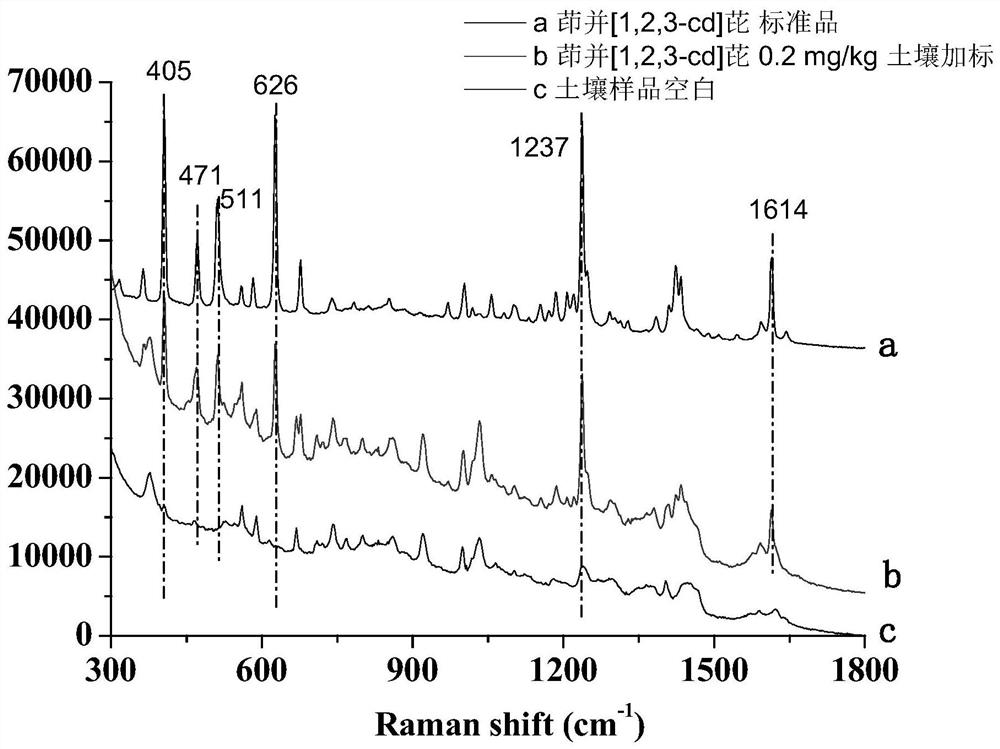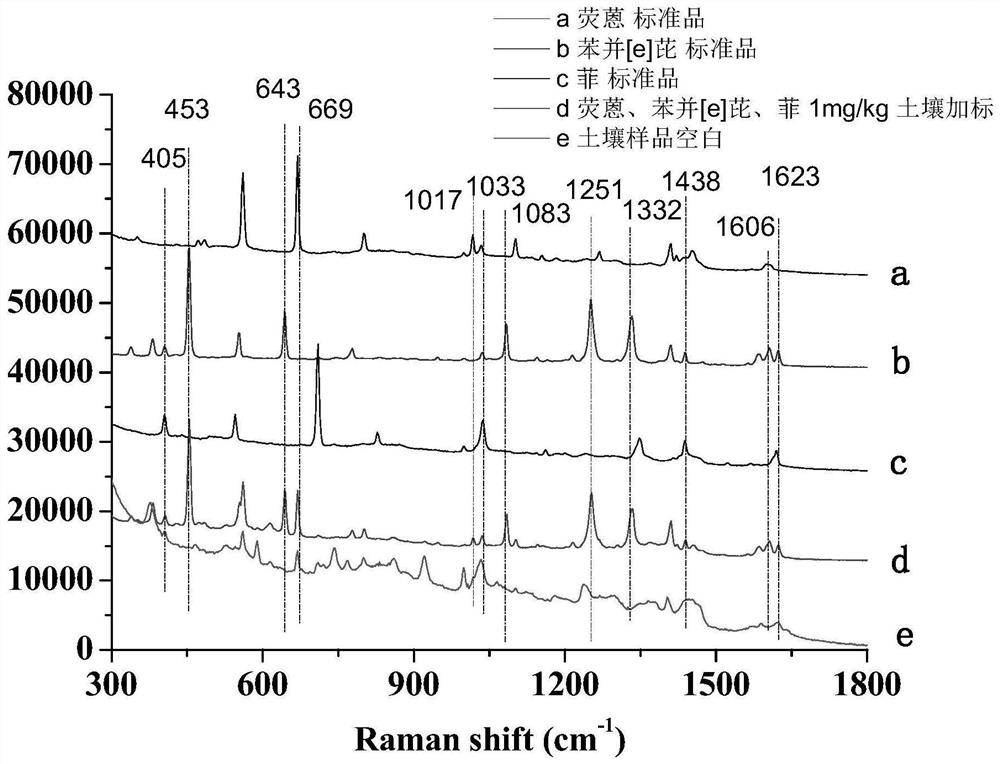Method for detecting polycyclic aromatic hydrocarbon in soil
A technology of polycyclic aromatic hydrocarbons and detection methods, which is applied in measurement devices, instruments, material analysis by optical means, etc., to achieve the effects of short analysis time, many detection items, and simple steps
- Summary
- Abstract
- Description
- Claims
- Application Information
AI Technical Summary
Problems solved by technology
Method used
Image
Examples
Embodiment 1
[0032] Example 1: S1, sample treatment: take 1g soil sample (containing 0.2mg / kg indeno[1,2,3-cd]pyrene) in a beaker, add 5mL petroleum ether for ultrasonic extraction, take 2mL supernatant Solid-phase extraction column, the lower layer of the solid-phase extraction column filler is alumina, the upper layer is anhydrous sodium sulfate, the column height is 1 cm (the upper and lower layers are respectively high 0.5 cm), the filtrate is collected in a volatile bottle, and dried with nitrogen;
[0033] S2, sample elution: take 200 μL of acetonitrile in the above-mentioned volatile bottle, shake it and use it as the test solution for later use;
[0034] S3, Raman detection: Take 50 μL of the solution to be tested, add 100 μL of nano-silver sol and 100 μL of sodium chloride solution with a concentration of 1 mol / L in sequence, mix well and put it in a Raman spectrometer for detection.
Embodiment 2
[0035] Embodiment 2: S1, sample processing: take 5g soil sample (containing 0.1mg / kg benzo [a] anthracene) in the beaker, add 20mL dichloromethane ultrasonic extraction, take 5mL supernatant and pass through the solid phase extraction column, The solid phase extraction column packing is 200-300 mesh silica gel, the column height is 0.5cm, the filtrate is collected in a volatile bottle, and blown dry with nitrogen;
[0036] S2, sample elution: take 500 μL of ethanol in the above-mentioned volatile bottle, shake it and use it as the test solution for later use;
[0037] S3, Raman detection: Take 100 μL of the solution to be tested, add 100 μL of 0.1 mol / L sodium sulfate solution and 500 μL of nano-gold sol in sequence, mix well and put it in a Raman spectrometer for detection.
Embodiment 3
[0038] Example 3: S1, sample processing: take 10g of soil samples in the environment (containing 1mg / kg fluoranthene, 1mg / kg benzo[e]pyrene, 1mg / kg phenanthrene) in a beaker, add 40mL ethyl acetate for ultrasonic extraction , take 5mL supernatant to pass through the solid phase extraction column, the solid phase extraction column packing is PEP, the column height is 0.3cm, the filtrate is collected in a volatile bottle, and blown dry with nitrogen;
[0039] S2, sample elution: take 500 μL of dimethylformamide in the above-mentioned volatile bottle, shake it and use it as the test solution for later use;
[0040] S3, Raman detection: Take 50 μL of the solution to be tested, add 200 μL of 0.1 mol / L sodium nitrate solution and 200 μL nano-gold sol in sequence, mix well and put it in a Raman spectrometer for detection.
[0041] The result of embodiment 1,2 and 3 sees respectively figure 1 , figure 2 and image 3 . Depend on figure 1 It can be seen that the surface-enhanced R...
PUM
 Login to View More
Login to View More Abstract
Description
Claims
Application Information
 Login to View More
Login to View More - R&D
- Intellectual Property
- Life Sciences
- Materials
- Tech Scout
- Unparalleled Data Quality
- Higher Quality Content
- 60% Fewer Hallucinations
Browse by: Latest US Patents, China's latest patents, Technical Efficacy Thesaurus, Application Domain, Technology Topic, Popular Technical Reports.
© 2025 PatSnap. All rights reserved.Legal|Privacy policy|Modern Slavery Act Transparency Statement|Sitemap|About US| Contact US: help@patsnap.com



